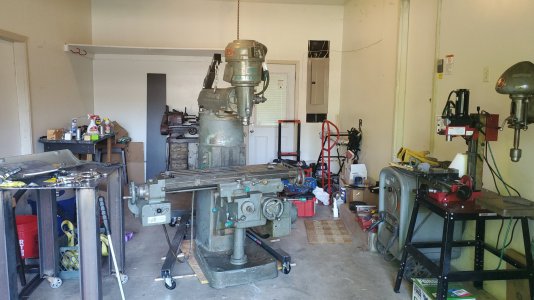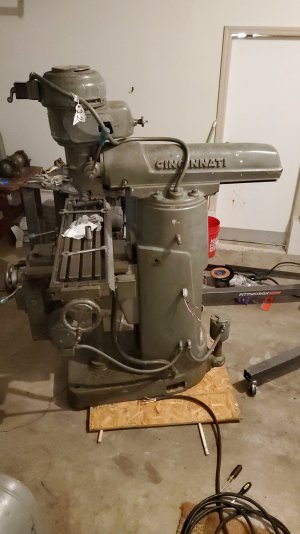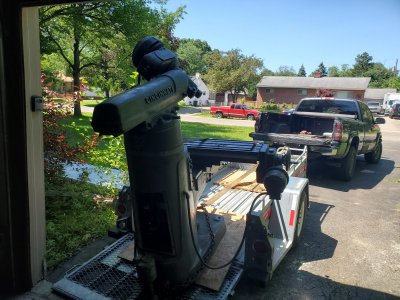- Joined
- Feb 4, 2021
- Messages
- 39
I just got this Cincy Toolmaster 1-A in yesterday. Some pics attached of it in the garage and being unloaded (you can also see the little mini mill it's replacing!). It was tough without a pallet jack or forklift, but with a HF crane, prybar, and some wooden dowel rods under plywood, it came slowly (and with a lot of teetering on the ramp...). Very scary affair at times and I eventually need to get it on a pallet and get a pallet jack so I'm not having to prybar it everywhere.
I'm having some mild troubles with it, the first of which is that the toothed belt at the bottom of the head is incredibly difficult to change to the low position, even with the rear set of pulleys pushed forward. It runs nice and quiet in the high position but I haven't been able to get it to the lower position. Is this common or do I maybe just have a short belt?
The other problem is that the contactor/breaker at the back keeps tripping when I have it powered (220V dryer plug thru to VFD). I can usually restart it by going to the side panel and playing with the start/stop buttons and the power switch, but I can't stop it tripping in the first place. Let me know if this is a common problem. It's got the X and Y powerfeeds, (some speeds work, others probably have broken gears but I haven't opened them up to see) and the coolant pump which works, so I'd rather not bypass all the circuitry back there and just wire the motor.
I'm having some mild troubles with it, the first of which is that the toothed belt at the bottom of the head is incredibly difficult to change to the low position, even with the rear set of pulleys pushed forward. It runs nice and quiet in the high position but I haven't been able to get it to the lower position. Is this common or do I maybe just have a short belt?
The other problem is that the contactor/breaker at the back keeps tripping when I have it powered (220V dryer plug thru to VFD). I can usually restart it by going to the side panel and playing with the start/stop buttons and the power switch, but I can't stop it tripping in the first place. Let me know if this is a common problem. It's got the X and Y powerfeeds, (some speeds work, others probably have broken gears but I haven't opened them up to see) and the coolant pump which works, so I'd rather not bypass all the circuitry back there and just wire the motor.




